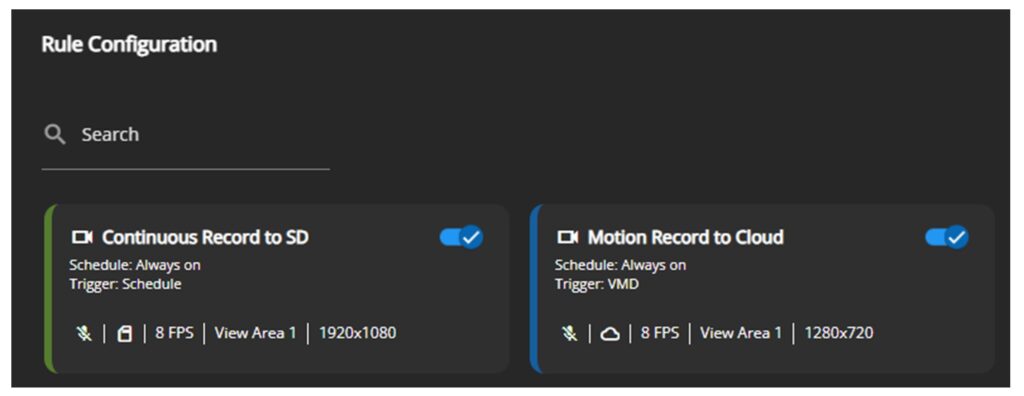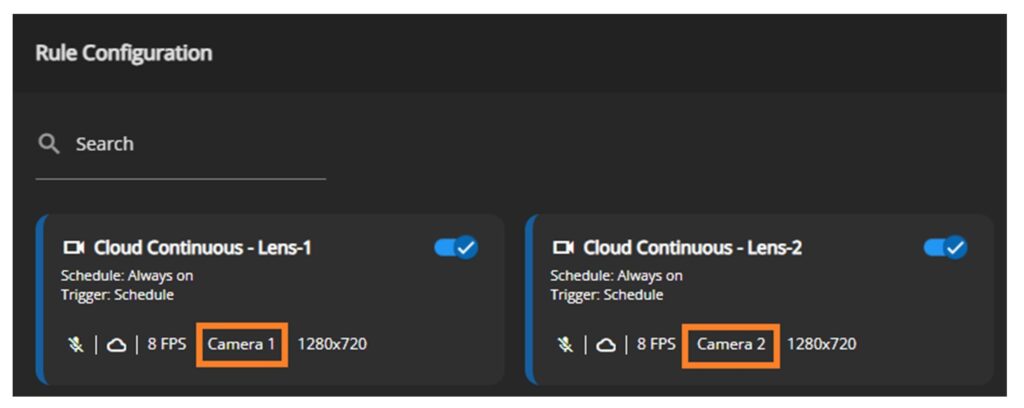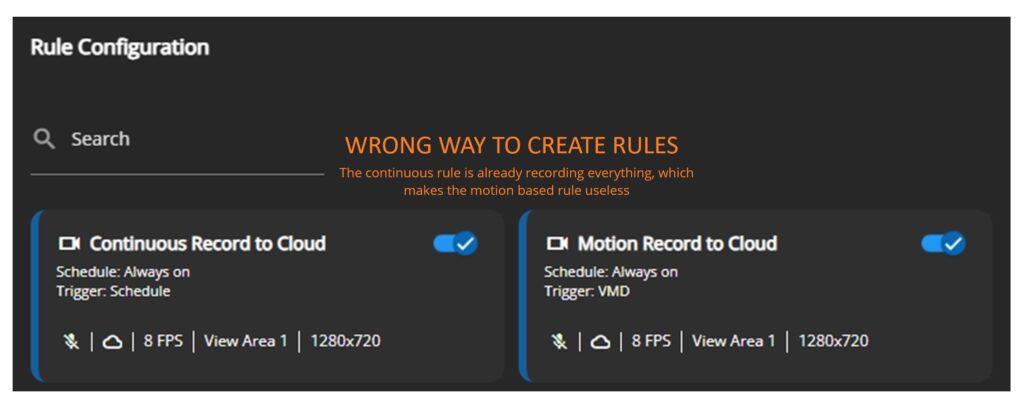Recording Rule Best Practices
Once a device has been added to YourSixOS, the next step is to configure its settings. The primary configuration task is to establish a recording rule, which can be done on the edit device page. Here are some best practices for setting up a recording rule for the device.
Where
Y6OS will enable devices to record to an SD card in the device, the cloud, or a NAS.
YourSix recommends SD card and Cloud storage. Note the example below. This is just a recommendation. Each deployment should be evaluated based on the desired outcome.

When
Y6OS will enable devices to record continuously or via triggers based on edge-based AI and schedules. This includes:
- Event detection: Record when motion or an object is detected
- Schedules: Record only during a specified time or day
- Sound detection: Record when sound is detected
When using an edge-based AI trigger for recording, YourSix recommends the following:
- VMD (Motion detection): Primary analytic to trigger a recording. The device will record anytime motion is detected. Example in the image above.
- AOA (Axis Object Analytics): Alternative for use when bandwidth is a concern.
Additionally, YourSix recommends recording continuously to the SD card in the device in order for redundant storage of events to take place. Example in the image above.
Additional Best Practices & Notes
Scenarios and Profiles
- When recording using an edge-based AI analytic, the device scenario or profile must be configured. This can be completed by accessing the device interface and navigating to the analytics.
Multisensor Devices
- When creating a recording rule based on an edge-based AI analytic for devices with multiple sensors, YourSix recommends creating a separate rule for each sensor. This means, for example, having one rule for sensor one and another for sensor two. While the platform does permit multiple sensors to be included in a single rule, this configuration results in all sensors within that rule recording whenever any one of them detects an event (based on the analytic). By separating the rules, each sensor will function independently when recording. Example below. For additional best practices visit our Multisensor Best Practices page.

- Please refer to our subscription page for the cloud storage subscriptions needed for a multisensor device. Also, be sure to review the scenario and profile requirements mentioned in the previous section.
Recording Rules in The Device Interface
Recording rules should be configured in Y6OS. While you can set them up through the device interface, it’s not the correct location for this task. Please refer to our guides or videos to find the appropriate place to create the rules.
Multiple Recording Rules
- YourSix suggests utilizing at least two recording destinations (such as cloud and SD card) when setting up a rule. Each rule will be configured independently. However, it’s NOT recommended to have multiple recording rules for the same sensor to the same storage location (as shown in the image below). Only one rule should be established for each recording location. Example of an IMPROPER rule configuration:
In this example both rules are set to record to the cloud. One for continuous and one based on motion. The continuous rule will capture everything making the motion rule useless. This is how NOT to configure recording rules.

Moving a Device Between Organizations or Sites
When a device is transferred from one organization to another, it is recommended to perform a factory default of the device to ensure that any existing data on the device or SD card is not accessible to unauthorized users or organizations. Once the device is added to the platform, after the factory default, then please recreate the recording rules.
Related Resources
